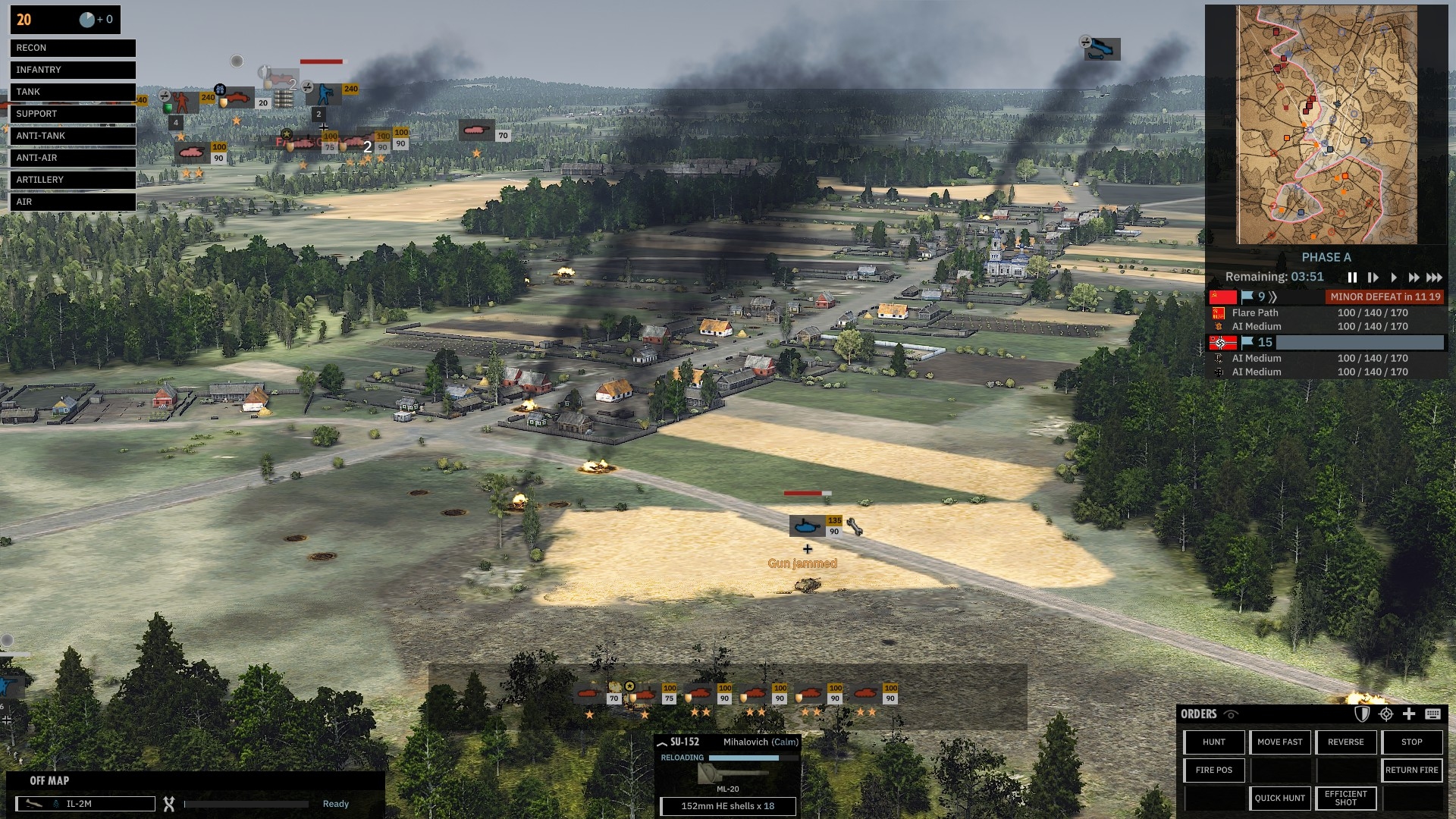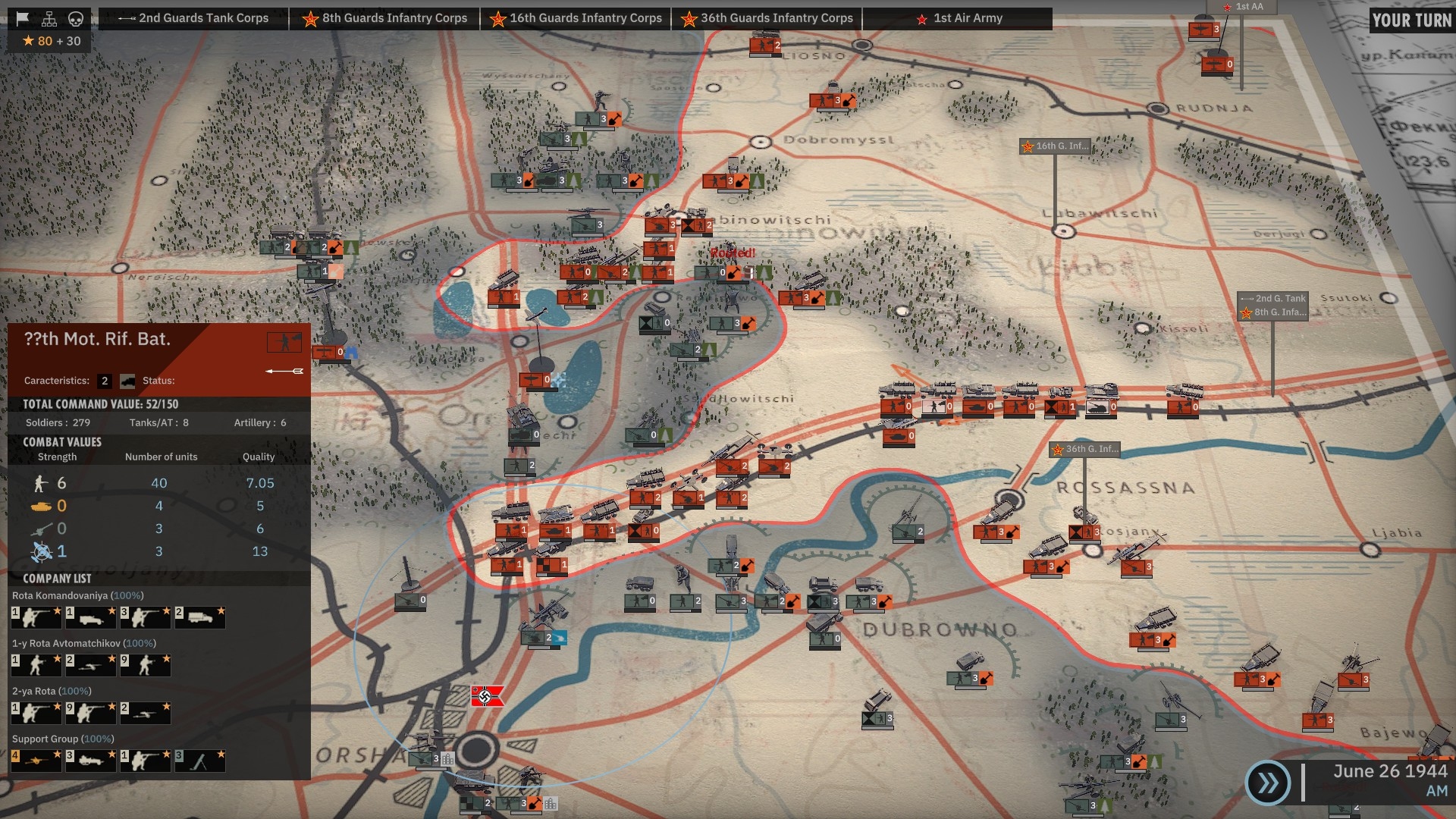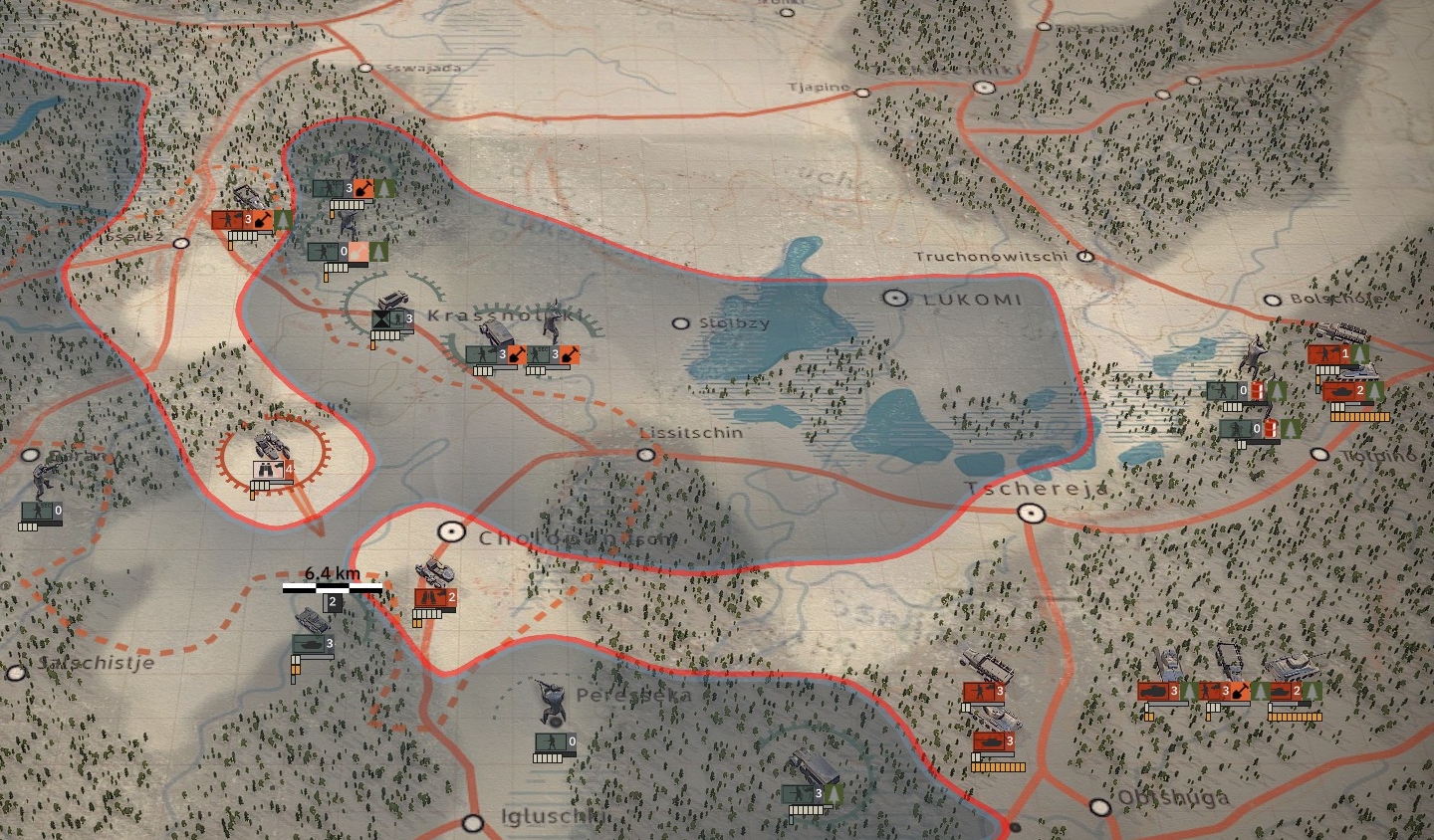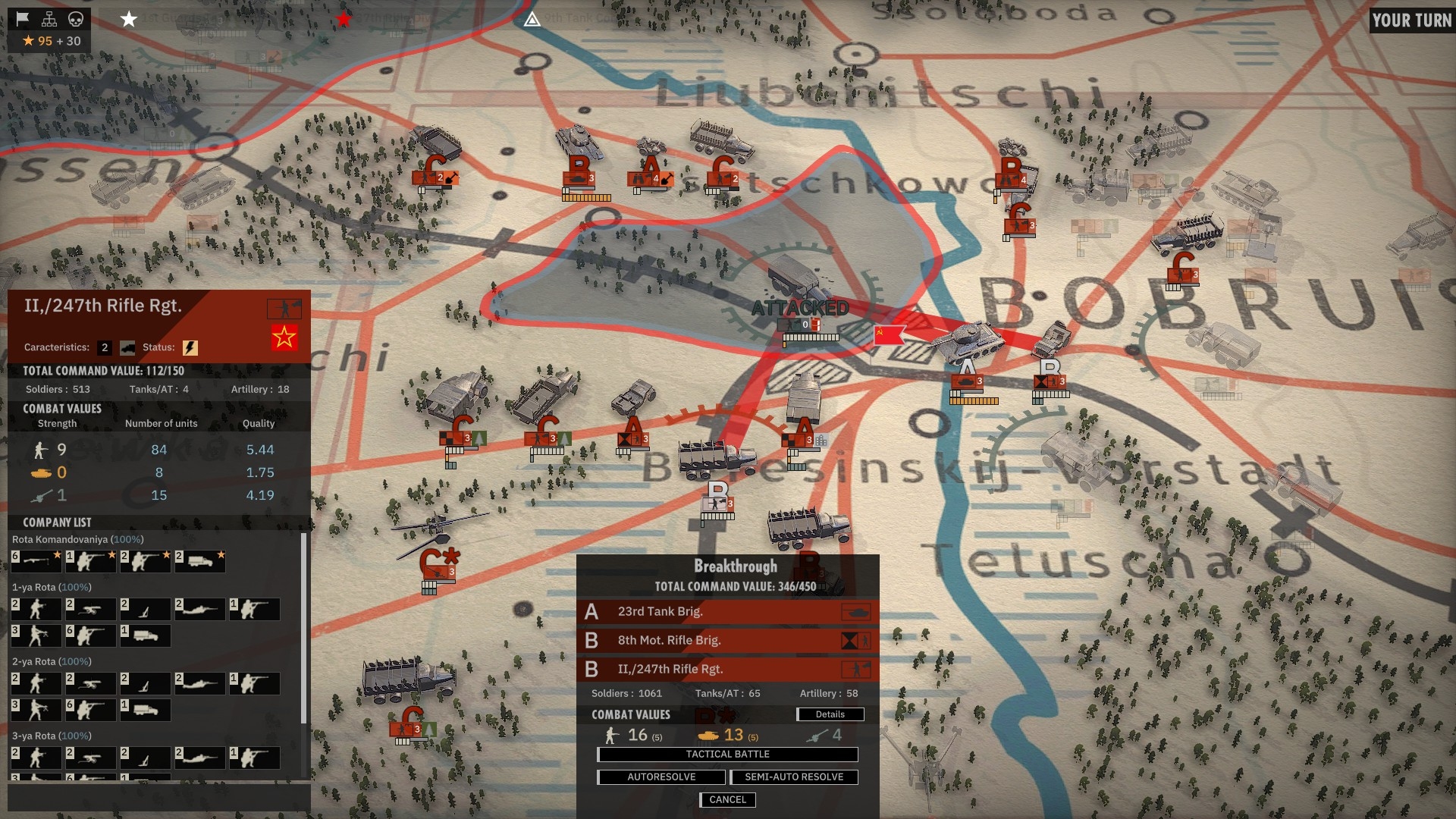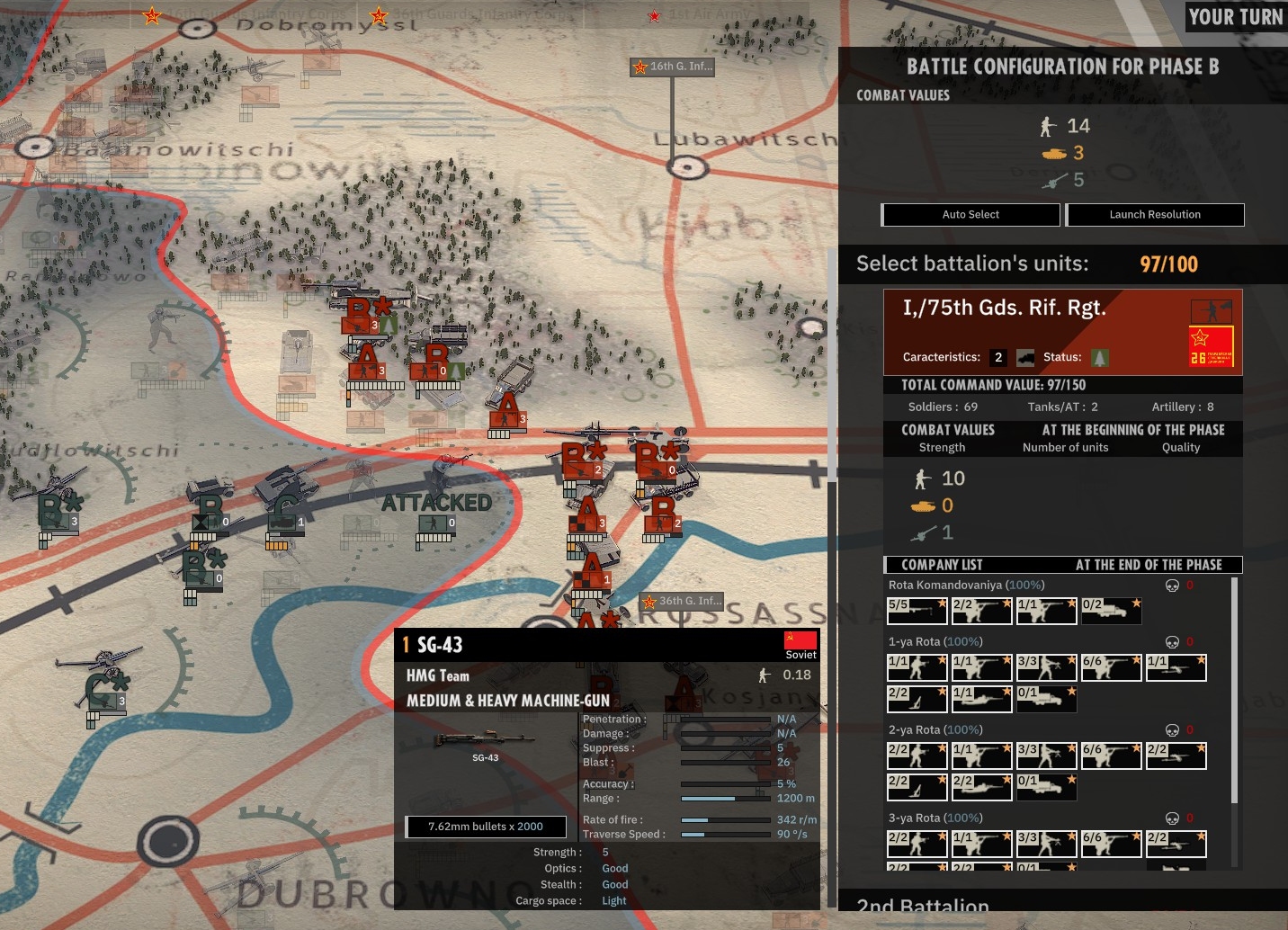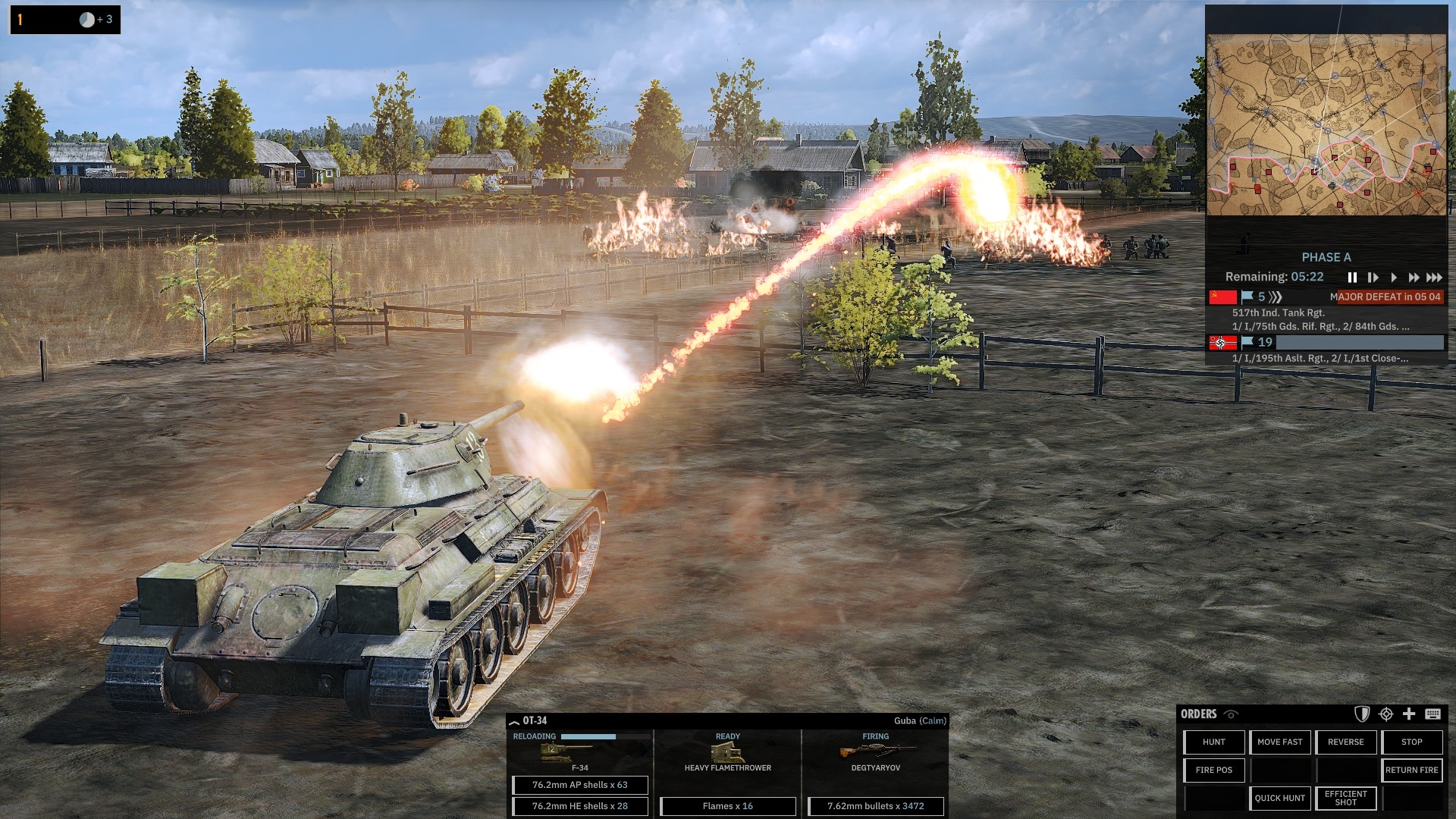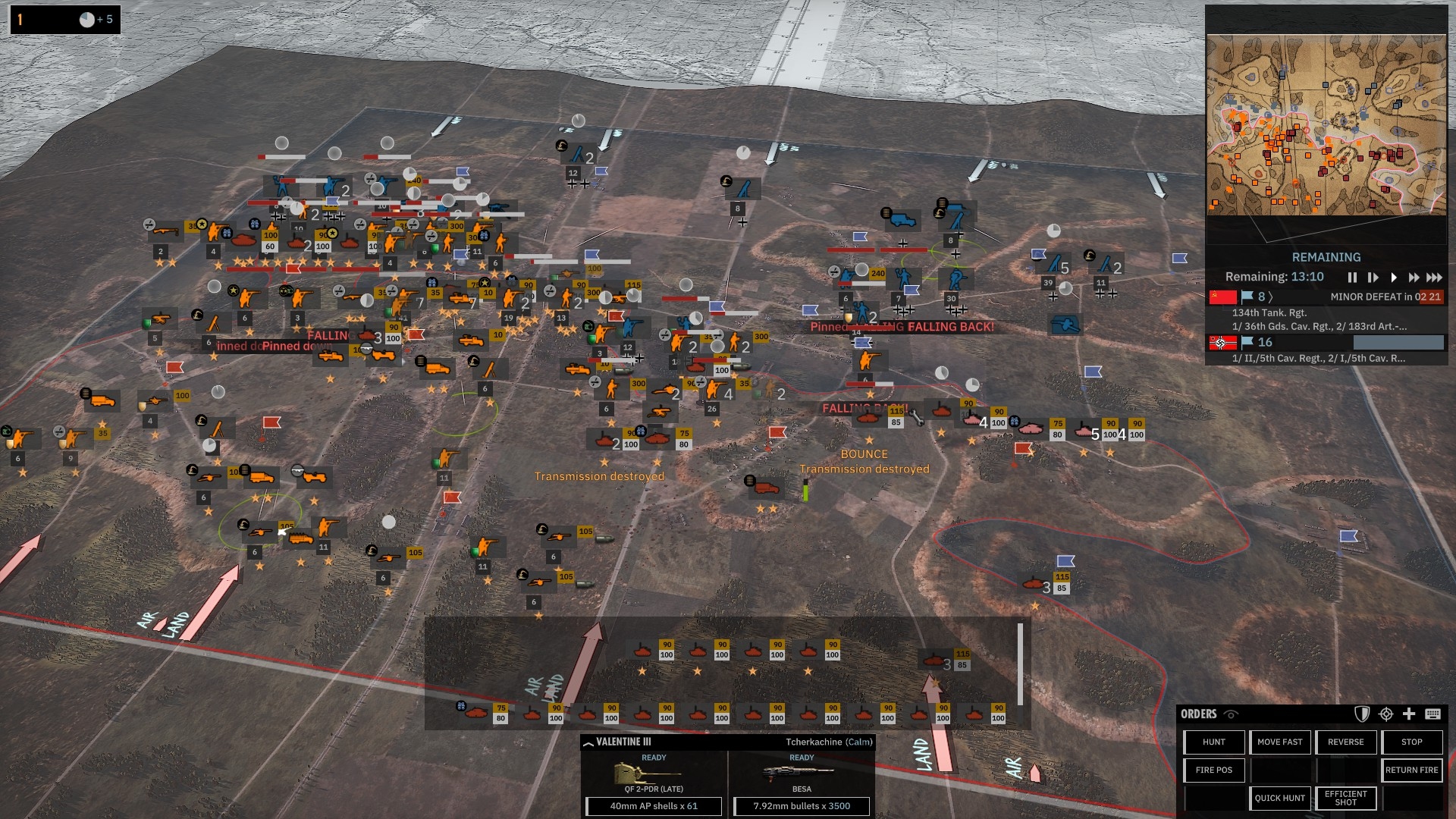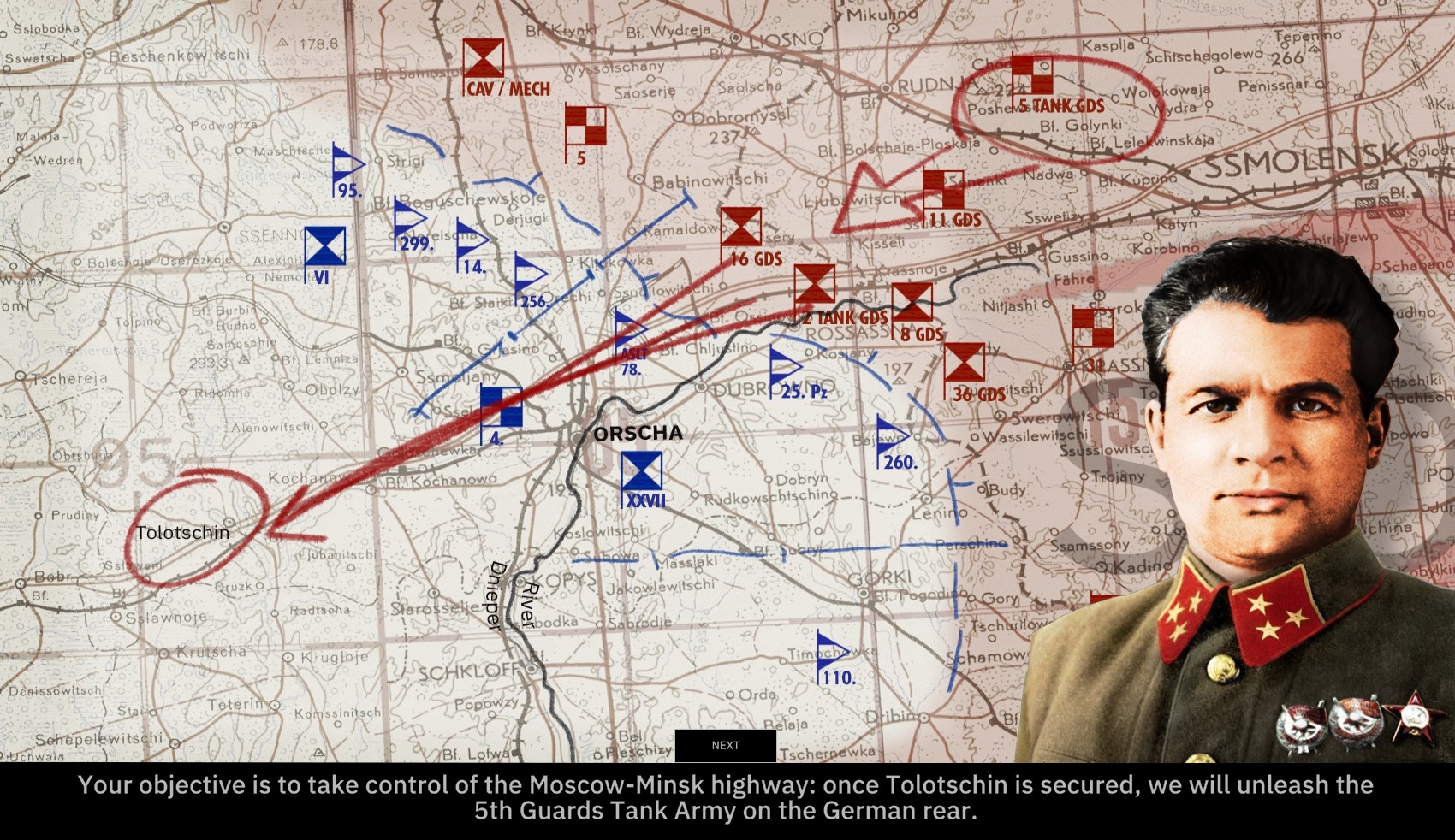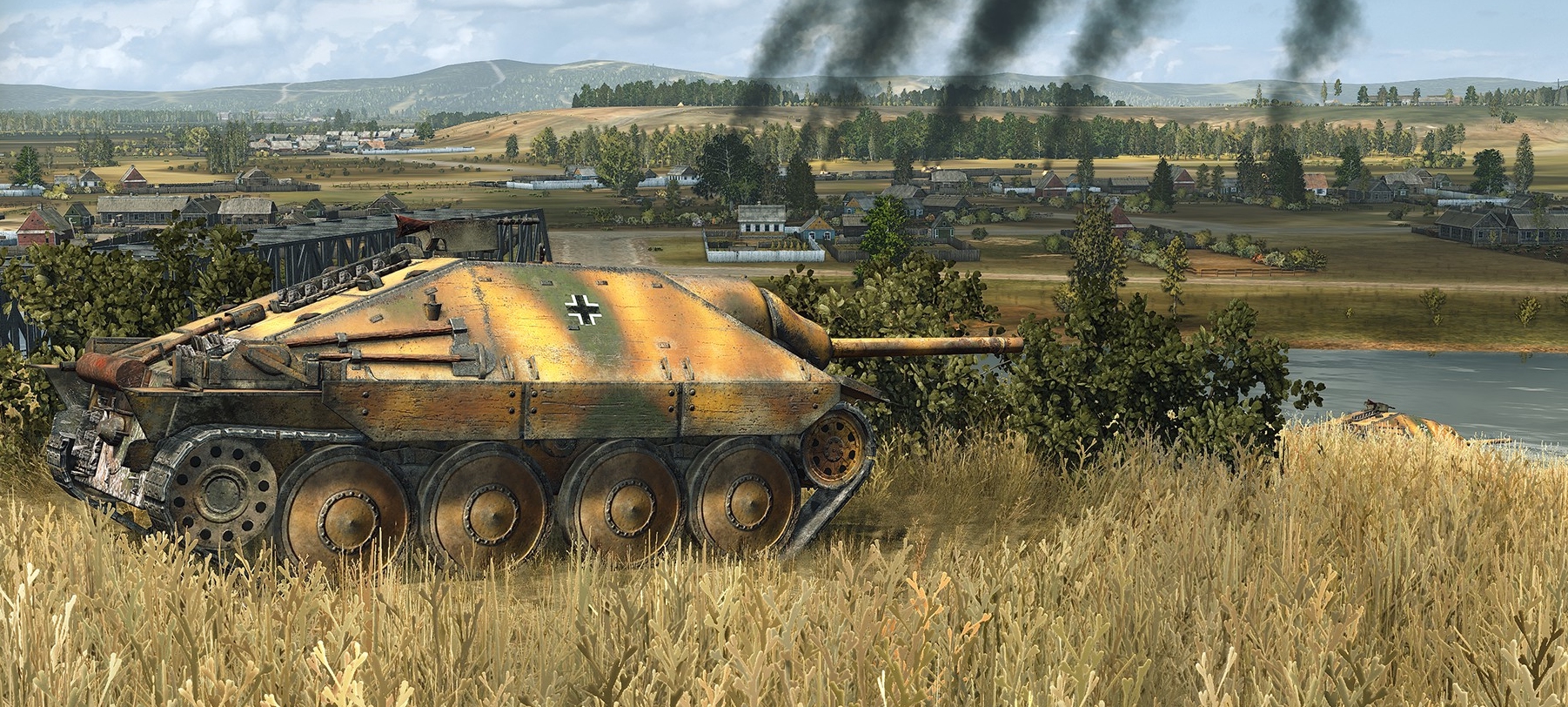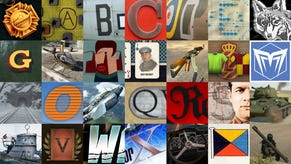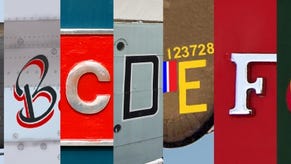The Flare Path likes Steel Division II
Tasty Bagrations
If the dazzlingly different duplex wargame I've been enjoying this past week was a debut release from a small, impoverished specialist studio that few had heard of, the paragraphs that follow would radiate enthusiasm. Because it's actually the work of a big (though not quite as big as it used to be) well-heeled company with a long history of producing well-received military strategy titles, the paragraphs that follow will radiate enthusiasm.
Steel Division 2 is, as you're probably aware, two games in one. A totally new turnbased operational wargame set during the first phase of Operation Bagration shares a foxhole with a realism-heavy tactical RTS that plays very similarly to its forerunner. Happily, the pair get on like a hayrick on fire. In the heat of battle TBSov and RTSky are always watching each other's backs. Weaponry, ammo, and rations are shared, thoughts are read, weaknesses compensated for. If it wasn't for some relatively minor ergonomy and victory condition issues, you'd never guess TBSov had never seen the Sd.Kfz. 184 before.
Yes TBSov, aka Army General mode, is a revelation. Sufficiently sophisticated, fresh, and serious about it subject matter to pass muster as a standalone wargame, it meshes with its partner improbably well. Here's how it works. The white metal miniatures on the light side of the serpentine frontline in the screenshot above represent friendly battalions*. Each half-day turn you spend their Action Point allotments (usually three per battalion) moving them around the map and initiating attacks. The more APs a battalion expends travelling, the fewer it has to devote to violence. Play as the attacker in one of the four provided ops and every turn is a delicious dilemma – a balancing act between maintaining forward momentum... exploiting breakthrough opportunities, and ensuring your units have the APs necessary to chisel holes in enemy lines and defend themselves properly if counterattacked during the foe's half of the turn.
* Battalions belong to parent divisions for recruitment purposes only. You can mingle units without penalty.
Acknowledging the fact that WW2 Eastern Front history boasts more pockets than a professional shoplifter's greatcoat, Eugen quietly encourage envelopments with an easily grasped logistics mechanic and pleasingly bold terrain modifiers. As cut-off battalions only regenerate a modest portion of their maximum APs, eventually routing if marooned too long, it pays, where possible, to bypass and encircle intimidating foe clumps (ideally, by utilising roads) then watch them shrivel, rather than slowly and painfully bludgeoning your way through them. The AI, while not Unity of Command incisive is sufficiently smart, mobile and responsive to try its own envelopments from time to time, and when pocketed will generally attempt to breakout.
Click on an enemy unit in range of a friendly, and you're offered the chance to initiate a three-phase, six-battalion scrap. Which three battalions you commit to the fray will depend on who is nearby*, what weaponry/manpower they possess**, and how many APs they have remaining. A battalion some distance from the target or with an AP tally depleted by movement, may not be able to influence the battle in the first or second phase. Once you've filled your trio of slots and the foe has done the same, it's time to face one of wargaming's most unusual and difficult decisions.
How would you like to resolve the battle?
* Squadrons of ground attack aircraft are always eligible.
** Attempting to dislodge a forest-hugging, dug-in infantry battalion with a trio of your strongest armour battalions is seldom wise.
Opt to autoresolve and the camera won't move a muscle. The battle will play out in seconds – rising colour-coded casualty figures above the six involved battalions telling a pithy three-chapter story of struggle and sacrifice. Win a resounding victory and the enemy units will retreat or disintegrate, and, assuming you're attacking, yours will shuffle forward to occupy the vanquished's positions.
Option #2, semi autoresolve, is a little more hands-on but also leaves the camera where it is. Take this route and for each phase you decide exactly which battalion components are fed into the meatgrinder.
Finally, there's the possibility of 'tactical resolution'. If you're in the mood for cinematic slaughter - the friendliness, pace, and polish of Company of Heroes mingled with the spaciousness, long weapon ranges and truthful unit relationships of Graviteam Tactics - you can spend twenty minutes or so in the company of Comrade RTSky. Eschewing SD2's version of the Duckworth-Lewis Method means fighting a three-phase scrap on a fetching pre-built map using hand-picked units. Naturally, the units available for purchase and the phases in which they become available depend on which battalions you've assigned to the battle.
Aware perhaps that some players struggled with the grand scale and hectic pace of Steel Division: Normandy 44's skirmishes, Eugen offer commendable delegation options in SD2. If you do plump for manual engagements then there's no obligation to oversee all three elements of your force personally. By letting a friendly AI wield one or two prongs of your trident, then lengthening those prongs by giving away portions of your own, it's possible to fashion bijou battlegroups well-suited to players who prefer their combats Close.
I've spent entire clashes happily shepherding a handful of tanks or specialist infantry units. I've restricted myself to aircraft and armoured cars. I've cast myself as my side's one and only Stonkführer. I've deliberately absented myself from Phase A... By experimenting with delegation options and making good use of the various slow-speed and pause options available, SD2's numerous subtleties (ricocheting shells, immobilisations, complex ambushes...) can be savoured by anyone inclined to do so.
While the pressure to retain control of or quickly seize Victory Locations never goes away (All three types of tactical scraps generated in Army General mode involve fighting for a map's profusion of VLs) assuming you pick your fights, prune your responsibilities, and pause regularly, SD2 is perfectly capable of serving up periods of Close Combat and Combat Mission-style tension.
With a tweak here and there, and a few more scenarios in its operation folder, I'd be able to recommend SD2 even to people convinced they'll dislike Comrade RTSky. Accessible, fast moving and evocative, Army General mode captures the flavour of Eastern Front aggro very nicely. Multiple unscripted conundrums are guaranteed every turn. Autoresolve or semi-autoresolve exclusively and you're still sure to have fun. My few complaints relate to contradictory victory conditions and some legibility issues caused by the game's overlapping figurines and grid-less approach to terrain.
At the moment, bizarrely, it's possible to win and lose an Army General op at the same time. A perfectly serviceable victory condition system that acknowledges kills, VL ownership and long-term occupancy bickers with a completely unnecessary one that insists on bringing down the curtain the second a particular objective or group of objectives is achieved. Occasionally, an op closes with a pop-up announcing one result, then immediately a detailed stat screen declares a quite different outcome. Eugen have been patching* doggedly since release so hopefully this silly inconsistency will be addressed soon.
* And improving sketchy documentation.
The decision to let Army General's battalions roam a map free of obvious cells is an interesting one. It leads to some unit selection annoyance and can make plotting movement orders and judging attack eligibility ranges a little trickier than necessary (On selecting a battalion it would be useful to see potential destinations banded according to AP cost) but in its favour it encourages the kind of instinctive play I wholeheartedly approve of and lends naturalism to unit dispositions. As fond as I am of hexagons, I won't be badgering the Parisians to switch to them in SD3.
One consequence of playing Army General ops entirely in autoresolve or semi autoresolve mode is that you're likely to whip through the quartet of Bagration bits in days rather than weeks or months. Inducements to replay are numerous (switch sides... radically alter your force by purchasing different reinforcements... select new schwerpunkts or stop lines) but I'm hoping the devs realise that some may choose to play this way, and, at the very least, offer new operations as affordable DLC at regular intervals.
I've been so absorbed by the ops that I've yet to brave multiplayer, sample the small selection of historical battles, or properly stress-test, via the skrmish mode, an AI that appears, at first and second glance, extremely capable. If you've experience in any of these areas that you're willing to set before potential SD2 purchasers, or wish to dispute my parting assertion that Army General is the best thing to happen to the historical RTS since Creative Assembly creatively assembled Shogun: Total War, then the comments section is, as ever, at your disposal.
* * *

